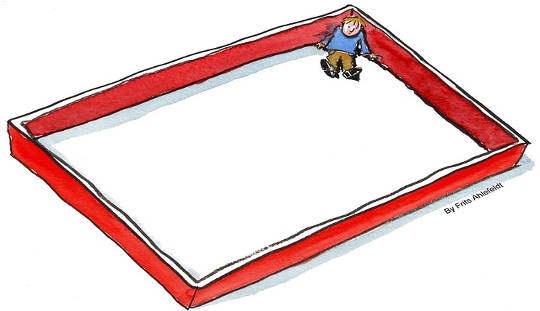
Let’s imagine that we are planetary diagnosticians, called in to assist in this period of our birth. What do we see? We find our selves to be a brilliant species with artistic, spiritual, scientific, and technological genius. We are the jewel of our solar system, bud ding with genius and creativity, ready to grow.
The vast majority of our members are good; we care for our young and strive to follow an ethic of consideration for others. Yet the history of our species is brutal, tragic in the cruelty we have afflicted upon one another, upon other species, and upon Earth herself. This flaw, this sense of separation from one another, from nature, and from Spirit, is the essence of evil behavior.
A New Level of Evolution: We Are All Connected
Our situation has come to a critical stage. Are there some heretofore hidden processes in us that we could activate, some homeopathic remedies for our violence that could stimulate more empathy, connectedness, and love?
Peter Russell estimated in The Global Brain Awakens that “10 billion seems to be the approximate number of units required in a system before a new level of evolution can emerge.” Coincidentally, it takes approximately 10 billion atoms to make a cell and 10 billion cells to make a brain. A UN report entitled “World Population Prospects: The 2012 Revision” estimates that we will reach nearly 9.6 billion by 2050.
Is 10 billion people what it will take for us to feel that we are all connected? But this is already a fact. We are all connected. Does it actually take a certain density of neurons on the planet for us to feel it and to overcome the illusion that we are separate from one another, from nature, and from the great creating process that is now flowing through us?
The New Creation Story
Here is a fascinating comparison with what happens to a newborn baby just after birth and what may happen to a planetary organism just after its birth period. At first the baby does not know that it has been born. Then, at some unexpected moment, after it has struggled to coordinate itself and nurse, stimulated by this effort its little nervous system links up and, suddenly, it opens its eyes and smiles at its mother. In that radiant smile it signals that it knows, at some deep level, that all is well, that it can survive and grow.
Here we are, from the perspective of the new creation story, a planetary species just after birth, struggling to coordinate our selves as a whole, fearing the destruction of our life-support systems, confused, and afraid. Nonetheless, our planetary nervous system is linking us up through phones, faxes, global satellites, and the internet. Are we being prepared for a time in the not too distant future when we will have an actual, empathic experience of our oneness?
Are we possibly at the threshold, as a newly emerg ing planetary organism, of our first planetary smile, a mass linkup of consciousness now emerging in so many: an awareness that we are whole, we are one, we are good, we are universal? Is this sense of connectedness and wholeness a vital part of the design we can facilitate? I believe the answer is yes and that it can become the catalyst and be fostered by us.
Morphic Resonance: We Are All One
Rupert Sheldrake, the British plant biologist, proposed in A New Science of Life that systems are regulated not only by the laws known to physical sciences, but also by invisible morphogenetic fields. His theory suggests that if one member of a species performs a certain behavior, it affects all others ever so slightly. In a famous experiment rats trained to run a maze in one laboratory seemed to affect the learning rate of rats in a completely separate laboratory who learned to go through the maze more quickly after the first group did so.
If a behavior is repeated long enough, its morphic resonance builds up and begins to affect the entire species. What began with the great mystics may be accelerating in us because of the crises and opportunities of our birth, thereby awakening the imaginal cells to their new functions, their organic partners, their untapped potentials. We may have entered what Peter Russell called a phase of “super-exponential growth, leading to a chain reaction, in which everyone suddenly starts making the transition to a higher level of consciousness.” He wrote in The White Hole in Time:
Could it be that in much the same way as the destiny of matter in a sufficiently massive star is to become a black hole in space, the destiny of a self-conscious species — should it be sufficiently full of love — is a “spiritual supernova”? Is this what we are accelerating toward? A moment when the light of inner awakening radiates throughout the whole? A white hole in time?
Five Lessons of Evolution
To help answer Russell’s questions and to discover the greater design of evolution, let’s look backward to see if we can learn from the patterns of past quantum jumps to help us through the traumatic period of our birth and the next turn on the Evolutionary Spiral. By reviewing our new story, we gain five major lessons that will encourage us to move forward now.
The historical perspective of a few thousand or even million years is not enough time to see the recurring patterns in cosmic evolution. When we stand back and witness the unfolding story — the big bang, energy, matter, galaxies, planets, Earth, life, animal life, early human life, and now another transformation — the logic of our hope is revealed, guidelines are given, and patterns of our transformation become visible.
1. Quantum transformations are nature’s tradition. “Quantum” in this context means a jump from one state to the next that cannot be achieved through incremental change alone. The jump from nonlife to life or from the most intelligent animal to early human is an example of quantum transformation. Infinitesimally small differences eventually lead to discontinuity and newness.
The capacity of evolution to produce radical newness is truly astonishing. One hundred thousand years ago there were no Homo sapiens; a few million ago there were no early humans. Before that there was no biosphere and no Earth, and 13.8 billion years ago there was no material universe. Nature works through radical change.
2. Crises precede transformation. When nature reaches a limitation, it does not necessarily adapt and stabilize; it innovates and transforms, as we saw with the single-cell crisis. Problems are often evolutionary drivers vital to our transformation. We learn to look for innovations that the problems are stimulating. We view our problems positively and notice the transformations occurring around us.
For example, the threat of nuclear weapons is forcing the human race to go beyond all-out war. The environmental crisis is awakening us to the fact that we are all connected and must learn how to manage a planetary ecology or else destroy our life-support system. We learn to expect the unexpected and to anticipate the new.
3. Holism is inherent in reality. Nature takes jumps by forming whole systems greater than and different from the separate parts. Subatomic particles form atoms, atoms form molecules, molecules form cells, cells form multi-cellular animals, on and on to humans — one of the most complex organisms on Earth, as Jan Smuts pointed out in his seminal work, Holism and Evolution. We see that planet Earth is herself a whole system.
We are being integrated into one interactive, interfeeling body by the same force of evolution that drew atom to atom and cell to cell. Every tendency in us toward greater wholeness, unity, and connectedness is reinforced by nature’s tendency toward holism. Integration is inherent in the process of evolution.
Unity does not mean homogeneity, however. Union differentiates. Unity increases diversity: We are becoming ever more connected as a planet while we seek further individuality for our cultures, our ethnic groups, and our selves.
4. Evolution creates beauty, and only the beautiful endures. Early species are often ungainly, like the Eohippus or Homo erectus as compared with a magnificent horse or a beautiful human. Every leaf, every animal, every body that endures is exquisite. Even creatures we may consider dangerous or disgusting are beautifully made.
The process of natural selection favors elegant, aesthetic design. (This gives us courage as we recognize the crude forms of so many modern cities, houses, and machines.) If this tendency of nature continues through us, the creations of human nature will become ever more ephemeral, minia turized, and beautiful.
5. Evolution raises consciousness and freedom. This lesson is the most important of all. Teilhard de Chardin called it “the law of complexity/consciousness.” As a system becomes more complex — from nonlife to life, from single cell to animal, from animal to human — it jumps in consciousness and freedom. Each is a jump through greater complexity and interconnectivity.
Our planetary system is becoming more complex. We are being connected by our media, our environment, our powers of destruction. If we were to drop a nuclear weapon on an “enemy,” the fallout would kill us. If a child starves in Africa or a youth is shot in Los Angeles, we immediately feel it in our homes through television and the internet.
This globalization is awakening in us a whole-system consciousness to complement the more mystical, unitive, or cosmic consciousness. This consciousness, a synthesis of both inner and outer connectedness, is still unstable in us, as perhaps self-consciousness and individual awareness were unstable in the animal world. Yet, the tendency toward expanded consciousness and freedom is the direction of evolution itself.
We Are Cocreative with Evolution Itself
The five lessons of evolution provide a response to the crisis of meaning we face in this postmodern world. As business visionary Mark Donohue said to me in a personal conversation in 1998:
Today we are beginning to discover a systems perspective to guide our new capacities, one that respects the 13.8-billion-year history of successful transformation. Many of us realize that there is an implicate pattern of success, that we are not random events cast on the seas of time, that we are now cocreative with evolution itself. We no longer need to solely be reactive to our problems. We can be proactive and choose a future commensurate with our self-evident capacities.
These lessons do not mean we will inevitably succeed. Evolution is a contingency, not an inevitability. We become potentialists, not optimists. We see the potential for evolution in the system, and in understanding our possibilities we take appropriate action. From this time forward, evolution proceeds more by choice than by chance.
©1998, 2015 by Barbara Marx Hubbard. All Rights Reserved.
Reprinted with permission of the publisher,
New World Library, Novato, CA 94949. newworldlibrary.com.
Article Source
 Conscious Evolution: Awakening the Power of Our Social Potential (Revised Edition)
Conscious Evolution: Awakening the Power of Our Social Potential (Revised Edition)
by Barbara Marx Hubbard.
Click here for more info and/or to order this book.
About the Author
 Barbara Marx Hubbard is an evolutionary educator, speaker, author, and social innovator. She has been called "the voice for conscious evolution of our time" by Deepak Chopra and is the subject of Neale Donald Walsch's new book "The Mother of Invention." Along with Stephen Dinan, she has launched the “Agents of Conscious Evolution” training and is forming a global team to co-produce a global multi-media event entitled, "Birth 2012: Co-Creating a Planetary Shift in Time" on Dec. 22, 2012 (www.birth2012.com). Visit her website at www.barbaramarxhubbard.com
Barbara Marx Hubbard is an evolutionary educator, speaker, author, and social innovator. She has been called "the voice for conscious evolution of our time" by Deepak Chopra and is the subject of Neale Donald Walsch's new book "The Mother of Invention." Along with Stephen Dinan, she has launched the “Agents of Conscious Evolution” training and is forming a global team to co-produce a global multi-media event entitled, "Birth 2012: Co-Creating a Planetary Shift in Time" on Dec. 22, 2012 (www.birth2012.com). Visit her website at www.barbaramarxhubbard.com





























